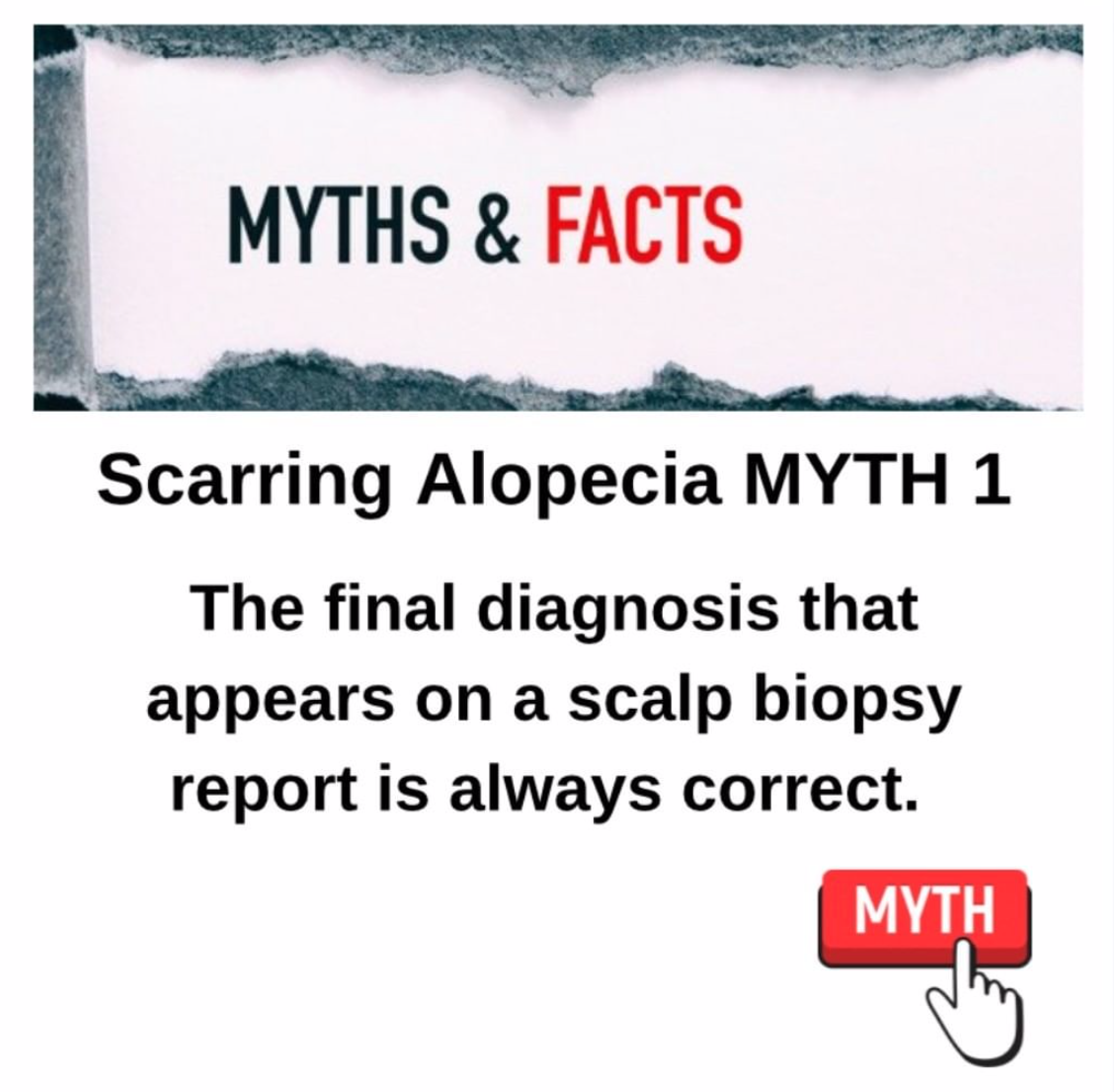National Scarring Alopecia Awareness Month (Day 16, Myth 1): Is the "Final Diagnosis" on a Scalp Biopsy Report is Always Correct?
The Scalp Biopsy Report in Scarring Alopecia: Can it be Wrong?
Scalp biopsies can be very helpful in the diagnosis of scarring alopecia. However biopsies are not needed if the clinician is confident that the diagnosis is certain following proper review of the patient’s history and scalp examination. If there is still doubt as to the diagnosis, then a scalp biopsy might be needed.
Most of the time, the final diagnosis that appears in the bottom line of the scalp biopsy report is the actual diagnosis that the patient has. But not always.
Why might error occur?
There are many steps where error can happen in the process of choosing a site on the scalp to biopsy, performing the biopsy and interpreting results. First, sometimes the biopsy is taken from a less than ideal area of the scalp. This may be done to try to hide the appearance of a small scar that the biopsy procedure might cause but sometimes it is due to poor choice of a biopsy site. A biopsy taken from a poorly chosen area gives inaccurate results. For example, if a patient has lichen planopilaris in the middle of their scalp but a biopsy is taken from the sides to avoid a noticeable scar, one should not be surprised of the biopsy returns showing telogen effluvium or some other non scarring alopecia even though the patient has lichen planopilaris!
Second the biopsy needs to be interpreted by an experienced pathologist. Not a month goes by that I don’t see a patient who comes to see me for an opinion on treating their lichen planopilaris but leaves with the opinion from me that they don’t even have LPP! Usually the situation is one whereby the patient had a biopsy showing they have perifollicular fibrosis and lymphocytic infiltration in the upper part of the follicle and the conclusion was made they have LPP. No comment is made about sebaceous glands being present or absent and no comment is made about keratinocyte death (necrosis/apoptosis) in the hair. Many of these patients have a non scarring alopecia and a carefully obtained history and scalp examination shows clearly that nothing in their story really suggests LPP.
The Classic Patient with A False Diagnosis
The typical patient I see with this false diagnosis is an 18-30 year old individual with seborrheic dermatitis and androgenetic alopecia and a biopsy was done because the clinician was not sure about the diagnosis of the scalp redness. The pathologist notices the perifollicular fibrosis and inflammation and incorrectly calls it LPP. Now, don’t get this concept wrong - an 18-30 year old can develop LPP. The point is that a small proportion of people with seborrheic dermatitis and other causes of scalp redness are in fact being told they have LPP when they don’t have this diagnosis ! Fortunately, it’s still a rare occurance but it’s devastating to be told you have scarring alopecia when you don’t. In addition, it’s potentially harmful to start medications for scarring alopecia when you don’t need them because you don’t have scarring alopecia!
Conclusion
In conclusion, one must always be open to the possibility that a scalp biopsy result is incorrect. A repeat biopsy might be needed or repeat interpretation.
REFERENCES
Perifollicular Fibrosis and Perifollicular Inflammation in Androgenetic Alopecia
This article was written by Dr. Jeff Donovan, a Canadian and US board certified dermatologist specializing exclusively in hair loss.

